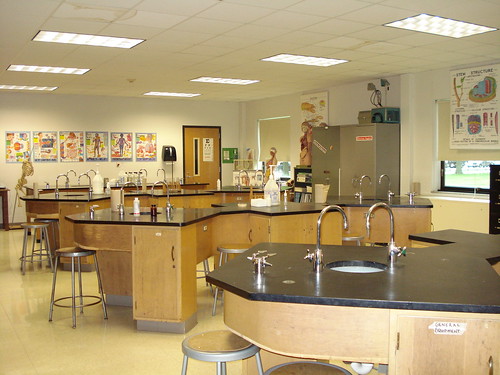Lab safety question
By Mary Bigelow
Posted on 2011-02-19
 I started my first full-time teaching position this semester—high school biology. According to the students, they did not do many labs last semester. I’m eager to do inquiry activities with my students, and obviously I want to do so safely. The department chair gave me copies of the safety contracts and handouts to use. Do you have any other suggestions as to what I should consider before our first lab activity?
I started my first full-time teaching position this semester—high school biology. According to the students, they did not do many labs last semester. I’m eager to do inquiry activities with my students, and obviously I want to do so safely. The department chair gave me copies of the safety contracts and handouts to use. Do you have any other suggestions as to what I should consider before our first lab activity?
—Jena, Dover, Delaware
Congratulations on your new job! I’m sure your students will learn from and enjoy the lab investigations and activities. I would recommend investing in a copy of the NSTA Press book Investigating Safely, which has many suggestions and resources for high school science.
It’s hard to take over in the middle of the year, so before you do your first activity, take time for an “inspection:”
- Check the utilities. Note the location of electrical outlets. Avoid using long extension cords or outlet multipliers. If there is gas in the room, find out where the master valve is and keep the gas turned off when not in use. Report the location of any leaky faucets or nonfunctioning gas jets and electrical outlets to the maintenance staff. If there are appliances such as a dishwasher or refrigerator, put a sign on them that they are not to be used for non-science related materials (e.g., washing coffee mugs or storing lunches).
- Be sure that the eyewash station, emergency shower, and fume hood are functional and accessible to the students. Look at the date on the fire extinguisher for a recent inspection. Report any issues to the safety officer.
- Put cleaning materials such as a dustpan, paper towels, hand soap, and a box to dispose of broken glass or other sharp objects in accessible locations.
- Identify and label areas where students can get class materials (paper, pencils, stapler) and where you can set out the materials for lab activities. Teachers often put lab materials in trays or plastic boxes for each lab team.
- Inventory your student safety gear. You must have goggles or other appropriate eyewear for each student in a class and a way to sanitize them at the end of each class, unless students have their own individual ones. Other safety gear may depend on the subjects you teach (e.g., aprons, gloves, tongs)
- Check your room for compliance with the Americans with Disabilities Act (ADA). Students who use wheel chairs may require extra room and lab tables should be at the appropriate height. If students use assistive technologies for vision or hearing, can they be used at your lab tables? Work with special education or guidance faculty to decide on the best way to accommodate student needs in advance so all can participate as fully as possible in the class activities. (Investigating Safely has a chapter on this topic.)
- Decide how many students can safely work at each lab station. Most are set up for a maximum of four students. If you don’t have enough lab stations for all students to work at once, you’ll have to plan to work in “shifts” during the period or across several days, including seatwork for students who are waiting their turn.
Before your first activity, do an orientation with your classes, reviewing safety issues and your routines. Show them where the safety equipment is, and demonstrate how/why/when to use it. Create your lab groups ahead of time. Your first activity should be one that does not require a lot of materials and that does not have many safety issues. During this “dry run” with full classes, circulate around the room and take notes. Remove anything blocking student access to the lab stations or exits, such as extra desks, extension cords, or carts. Decide where students should stow their backpacks, coats, and other personal gear. Stand at each lab table to determine if students can see the board or screen. Look for any corners where you can’t see the students. Adjust your plans and routines, if necessary, based on this assessment.
It is a challenge to engage students in planned and purposeful science investigations that are also interesting and relevant to them. Safety concerns can seem overwhelming, but planning (and over-planning), awareness, and common sense will see you through.
Photo: http://www.flickr.com/photos/40964293@N07/4018106328/
Disclaimer: The views expressed in this blog post are those of the author(s) and do not necessarily reflect the official position of the National Science Teaching Association (NSTA).


